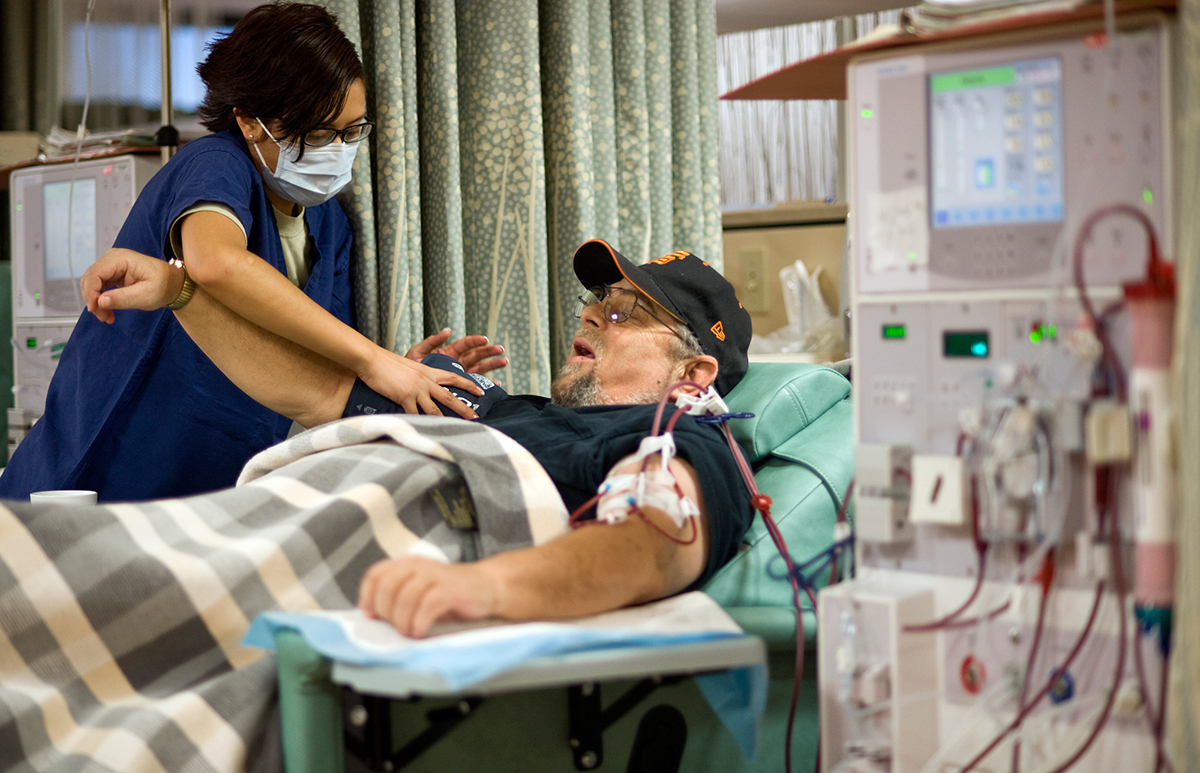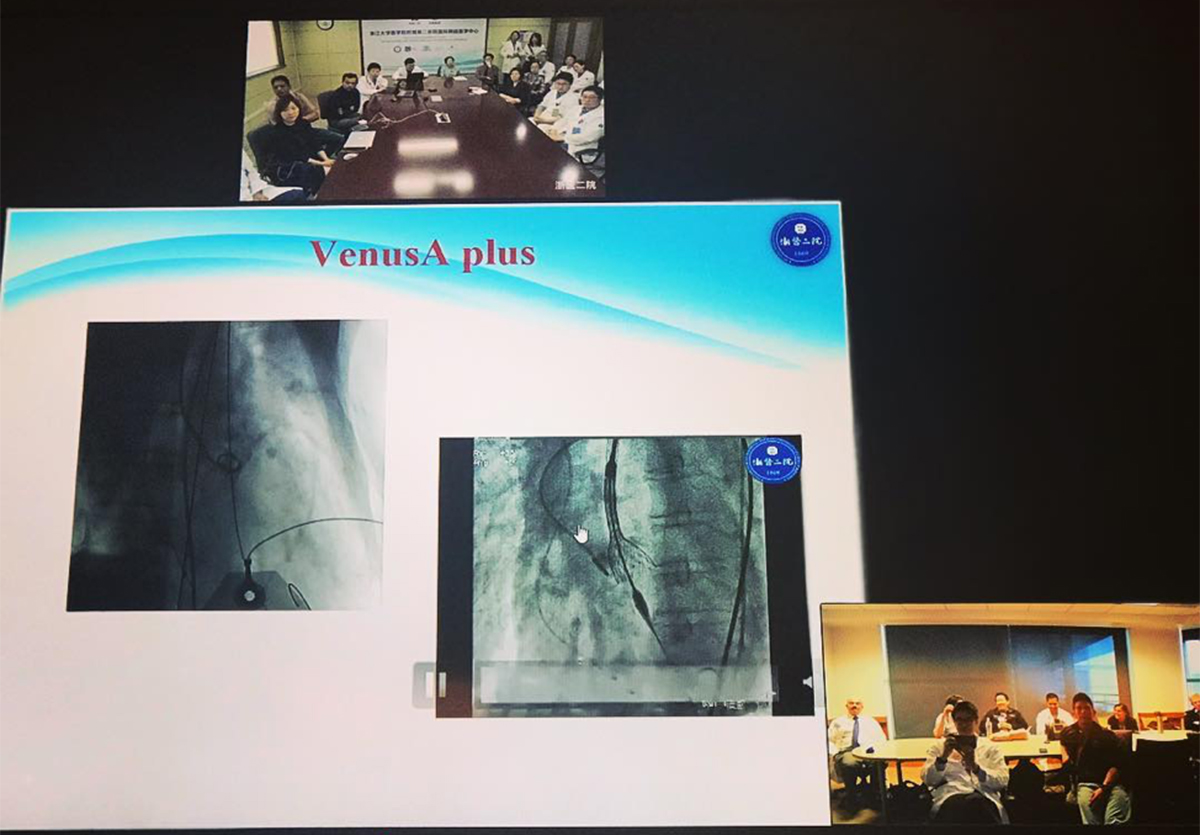Challenges and Opportunities For Fellowships With Multiple Training Sites
Cardiology fellowship is an exciting chapter in the growth and development of a physician-in-training. Fellowship training programs are charged with providing opportunities for trainees to acquire the knowledge and clinical judgment required to practice cardiovascular medicine today.
There are more than 200 cardiology training programs in the U.S. and the settings for fellowship programs are variable. Many training programs primarily occur at one site or hospital while others function across multiple sites and environments. According to a survey published in the Journal of Graduate Medical Education, residents training in an environment that included both community and large urban tertiary health centers stated that both of the sites complemented each other and made a valuable contribution to the quality of their training. Training sites can include county, community, private and Veterans Affairs (VA) hospitals.
The identification of strategies to maximize the potential of a fellowship housed at multiple sites can be a challenge for both trainees and program leadership alike. What can programs do to maximize opportunities and minimize barriers to the development of a high-quality training experience?
1. Acknowledge Workplace and Patient Culture

An important underpinning of any work environment is the culture. Workplace culture includes shared attitudes, values, goals and practices that characterize an institution or organization. In a multi-site fellowship, the acknowledgment of differing cultures will optimize the experience for all parties involved, ranging from how inpatient rounds are organized to degrees of autonomy provided to trainees. Rotating between multiple sites teaches fellows how to quickly adapt to new workplaces, workflows and cultures.
Patient culture includes ethnicity, race, religion and socioeconomic status. The diversity in patient culture at various sites can broaden the training experience. For example, a patient with end-stage heart failure may not have the same access to advanced therapies within a county system compared with a tertiary health care center. Thus, developing strategies to best serve patients based on available resources, along with acknowledging how social and cultural factors impact care, can enhance fellow education. This experience allows fellows more opportunities to find the best fit for future practice while also making them adaptable to a variety of potential work environments.
2. Identify the Highlights and Weaknesses in Systems
 CREDIT: U.S. Air Force photo/Tech. Sgt. Bennie J. Davis III
CREDIT: U.S. Air Force photo/Tech. Sgt. Bennie J. Davis III
By working at multiple sites, fellows are able to learn how to work within differing hospital systems. For example, rotating through a VA Healthcare System can be a rewarding experience for a physician — one that all trainees can benefit from — as providing cardiovascular care to our nation’s veterans can be a humbling experience, given their unique sacrifices. Strengths of this environment include exposure to “bread and butter” cardiology, as well as patients who are tremendously resilient. University hospitals — which can also serve also as tertiary referral centers — often provide valuable insights from faculty who specialize in specific procedures and imaging techniques.
For instance, some structural interventions such as left atrial appendage closure devices and transcatheter mitral valve repair are not performed in all hospital systems. Thus, exposure to these techniques (and the imaging concepts behind them) while working at university hospitals can be an invaluable experience. Furthermore, the identification of strengths at one site can be brought to another site to bolster quality improvement projects. Differing systems provide the opportunity to learn how to navigate and optimize access, resources and transitions of care in varying settings.
3. Actively Build Professional and Personal Relationships

While multi-site fellowship programs can result in lack of proximity amongst trainees, strong relationships can still be fostered and maintained. Our fellowship recently instituted a fellow and faculty mentorship program modeled after a program at Columbia University developed to improve mentorship. This program was purposely created to strengthen relationships and help organize regular social gatherings.
Since it can be difficult for trainees and faculty to build relationships outside of the clinical environment, a mentorship program is an important consideration in larger fellowships that cover multiple sites. It also provides fellows a chance to “check-in” with their mentor during potentially challenging times and learn from faculty how to handle balancing life outside of cardiology. Such relationships have the potential to last beyond fellowship, which can influence continued mentorship, collaboration and networking well after training is complete.
4. Stay Modern

Technology is a fundamental part of medical practice and training in 2018. The use of a reliable multimedia system for broadcasting conferences is an expectation. From the faculty perspective, the sharing of educational tools (i.e. internet cloud for sharing lecture slides) can help maintain an organized curriculum.
Our program developed an international exchange with the Second Affiliated Hospital of Zhejiang University School of Medicine and have had live case conferences between Los Angeles and China (Figure 1). Thus, distance and time zones should not be a disruptive barrier to the exchanging of ideas or education. In addition, the appropriate use of social media and encrypted chat listservers (i.e. Whatsapp) can rapidly disseminate information amongst trainees and faculty regarding journal articles, fascinating or difficult clinical patient cases, and research ideas and collaborations.
5. Remember the Goal

The primary goal of a cardiology fellowship is to prepare trainees to practice cardiology with a continual drive for self-improvement and education to provide the best evidence-based care possible for patients. Training in a fellowship that sends fellows to multiple sites is a dependable way to ensure that graduates are ready to adapt to any work environment as they begin their post-graduate careers and embrace diversity in their future practices.
The experience of training at multiple sites should open up future doors for graduates. Faculty have a pivotal role not only in training fellows but also in positioning them to access job and career opportunities. A multi-site fellowship can broaden the available network of faculty and fellows.
6. Embrace the Intellectual, Cultural and Clinical Diversity

Training within a program that has multiple hospitals provides a unique opportunity to broaden the educational experience. Fellows and faculty should consider how sharing ideas and approaches across sites can maximize the training environment for all members involved. Strengths and quality improvement initiatives can be extrapolated from one site to another in regard to potential areas of improvement in workflow, patient care, procedural education and research collaboration.
This article was authored by Kevin S. Shah, MD, advanced heart failure fellow at Cedars-Sinai Medical Center in Los Angeles and previous Fellow in Training at UCLA; Eric H. Yang, MD, FACC, cardiologist at UCLA Medical Center; and Karol E. Watson, MD, PhD, FACC, co-director of the UCLA Program in Preventive Cardiology at UCLA Medical Center.

